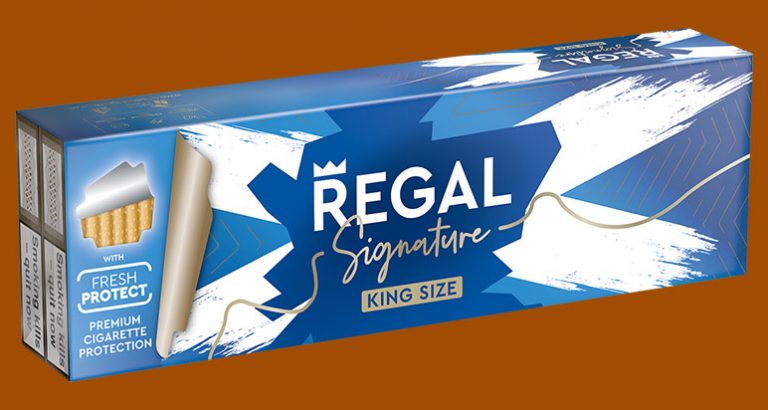The dark market may have put RYO out of sight, but its success remains on course, though new restrictions on pack sizes being introduced could play havoc with trends in the sector that include smaller packs.
by Kevin Scott
Like the rest of the tobacco category, the roll your own (RYO) sector is adjusting to the restrictions imposed by the tobacco display ban. Now three months in, the ban has failed to have much of an impact on sales – at least from anecdotal evidence, and trends in the tobacco category are continuing as they were before the ban.
Looking at the numbers and RYO accounts for 24.2% of duty paid sticks smoked in Scotland. This is less than the UK as a whole, where 31.5% of sticks smoked are RYO. However, it’s also slightly up on the same period last year when 23.8% of sticks smoked were RYO.
There is a belief among retailers that it is the EUTPD 2 legislation, set to be introduced next year, that will have a greater impact on the sales habits of RYO smokers.
The EUTPD 2 legislation will force the UK Government to ban the sale of loose tobacco in packets less than 30g, which means retailers will no longer be able to stock 12.5g and 25g packs of RYO tobacco. Between them, those pack sizes command 77% of the market – that’s a big hole to fill.
JTI is among the tobacco firms seeking a judicial review of the regulations and JTI Communications Manager Jeremy Blackburn comments: “These regulations that have been supported by the UK Government are wide-ranging will have a huge impact on thousands of legitimate businesses across the UK. The changes will affect over 40% of current UK tobacco sales creating a massive disruption to the market.”
Educating retailers
JTI says that its salesforce will play even more of an educational and business advisory role to support retailers, providing insightful market data on a regular basis to ensure the tobacco gantry is stocked with the best possible range of NPD to maximise profits. “It will be more important than ever for retailers to have a thorough understanding of what’s happening in the tobacco category, including the areas of growth, the most popular pack formats and what sells well in their region,” says Blackburn.
Imperial Tobacco says it has reacted to the Display Ban with a long-term strategy of heavy investment: both in providing the information (through education, training and support) and the infrastructure (supplying many thousands of tobacco unit solutions to retailers) to succeed in a dark environment.
“Establishing retailer best practice in terms of ranging, merchandising and availability remains the true key to success, though,” says Andrew Miller. “To achieve this, we concentrated on helping retailers manage on-shelf availability through effective stock management, while training staff to keep an eye on stock levels and sales data.”
The firm will also continue to provide retailers with planograms to make the process of merchandising and refilling shelves more efficient.”
The response of retailers to the Display Ban has been remarkable, meeting the challenge head-on with minimal disruption,” says Miller. “Already-strong relationships between reps and retailers have undoubtedly been reinforced further by working together to overcome the challenge of a dark market.”
In a statement to SLR, Imperial Tobacco said: “We are already actively consolidating insights from a number of sources and markets to ensure that we’re in the best possible position to support retailers, both pre and post-EUTPD 2. Our aim is to consistently deliver the best possible solutions in the face of changing legislation, illustrated most recently by our response to the Display Ban. We maintain regular dialogue with retailers and wholesalers, including active working groups, to ensure their views and concerns are at the forefront of any future developments.”
Ironically, just as the EU puts in place measures to ban them, smaller pack sizes are becoming a key trend. Until regulated otherwise, retailers should follow the advice of JTI’s Blackburn, who says: “Retailers should ensure they’re offering a wide choice of tobacco brands and pack formats, including a range of (9g), (10g), (12.5g), (20g), (25g) and (50g) packs.”
Andrew Miller, Head of Field Sales at Imperial Tobacco offers similar advice. “Pack size is very important in the RYO,” he says. “Imperial market share by pack size for Scotland is as follows: Less than 12.5g – 8.9%, 12.5g – 32.8%, 25g – 31.2%, 50g – 24.4%, Other – 2.7%. Scotland under-indexes vs. the UK as a whole on less than 12.5g and 50g and over-indexes on 12.5g and 25g.”
Imperial has a number of key brands in Scotland, including GV Classic which commands a 21% market share, Gold Leaf with 15.8% and GV Smooth with 7.8%.
From this successful position, Imperial has a good view of the market. Miller comments: “The roll-your-own tobacco sector has seen a number of innovations in recent times, from pack size and price-point innovations to PMP strategies. Trends over the past few years have also seen a marked increase in the number of consumers who are shopping ‘little and often’ – still demanding a quality product but allied to a lower out-of-pocket spend.”
He says that currently around 45% of the retail sales of the roll-your-own market in the UK are 12.5g or below, though in Scotland that figure is slightly lower at 41.7%. “We expect this ‘little and often’ trend to continue, however,” he says.
That trend will be blown out the water the minute EUTPD regulations come into force, but until then, small will remain key.
While smaller packs tend to be more prevalent in independent stores it’s important for retailers not to discount stocking larger sizes either. “With one in five packs of RYO tobacco sold being the 50g variant, larger pack sizes are becoming increasingly relevant as they offer adult smokers the best value during tough economic times,” says Miller.
When it comes to managing the RYO market in a post-ban environment, Blackburn says that retailers must not see the retail display ban as an opportunity to destock tobacco lines, arguing that it is more important than ever to maintain a strong range and portfolio, including an RYO offering.
“Retailers should ensure they maintain a full range and availability of RYO tobacco 24/7 and they will find their shops are likely to become points of destination in a retail display ban environment and will retain customers who are existing adult smokers,” he says. “To maintain RYO sales now the retail display ban is implemented, retailers should ensure that their staff receive regular training to increase their knowledge of the tobacco category and are aware of all new tobacco product developments.”
Value matters
Like the cigarette market, RYO has evolved into different price segments. The RYO price sector split in Scotland sees Economy with 24.0%, Premium with 22.3% and Value with 53.7%. Compared to the UK as a whole, the Scottish market over-indexes in the Economy and Premium and under-indexes in the Value sector.
One of the leading RYO brands in the UK within the value segment is Sterling Rolling, with a 10.6% share of the segment.
“With Value tobacco such a vital price segment and existing adult smokers so brand loyal, it is only by maintaining full availability at all times and stocking a wide range of brands that retailers are going to maximise profits,” says JTI’s Blackburn.
“Value is driving growth along with a real increase in PMPs which currently account for close to 82% of Independent’s RYO sales,” comments Graham. “This doesn’t mean that all RYO should be in PMPs though. This is more important at the VFM end of the market.”
Price Marked Packs remains key then, but in a dark market it’s impossible for shoppers to see packs before they purchase them.
NPD will continue in the dark market too, says Blackburn. “JTI is at the forefront of the market as one of the best executors of NPD, introducing brand extensions that are in tune with market trends, as well as reduced outer sizes, limited edition packs and smaller pack formats – all of which helps retailers drive sales and tobacco products that remain relevant to today’s existing adult smoker.”
“Consumers still want to try new products,” is the assessment of Alan Graham. “The large store display ban showed that NPD could be introduced into a display ban store and still sell. Consumers can request to view the products, and when being served they often spot new products. Retailers should not be scared of NPD in the display ban environment.”
Mid-Price
Mid-Price is the largest price segment in RYO, with a 58.3% share of the RYO category, bigger than all other price-segments combined. JTI dominates the mid-price segment with Amber Leaf, which commands an impressive 62.4% share of this segment. In fact, the Amber Leaf house has three of the top five best-selling RYO SKUs in the UK: Amber Leaf 12.5g, Amber Leaf 25g and Amber Leaf 50g.
In the Premium sections, JTI’s leading brand is Old Holburn, with a 9.5% volume share.
Niche products are another area that look set to be unaffected by the ban. “Big brands will always sell,” says Graham. “So will the cheapest, so give the consumer a strong VFM offering but not too many as they will choose the cheapest! Then there’s niche products with a USP such as Natural American Spirit, the UK’s leading additive free RYO.”
Dual smokers are a hallmark of the RYO sector and this has led brands such as Benson & Hedges, Pall Mall and JPS to move into RYO.
JPS RYO launched in a 9g pouch last year. With an rrp of £3.12 Imperial pitched it at smokers looking to reduce their outlay on tobacco, control consumption or simply looking to try the brand for the first time. Since April, pouches of JPS RYO now also include rolling papers. This move brings JPS in line with other economy RYO products (Around 80% of packs sold in the economy sector already include papers) and will be phased in across the range as existing stock sells through.
So, while retailers, consumers and suppliers get used to operating in the dark market, trends that have been prevalent in the category in recent years continue to develop without too much disruption… for now. The real question is whether they can be disrupted by the EUTPD regulations, and that is a question for another year.







